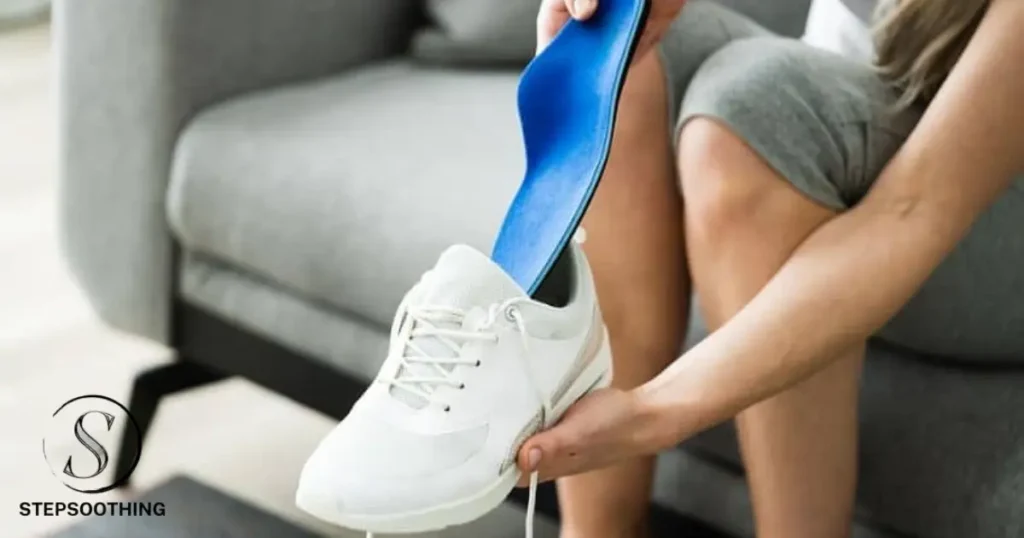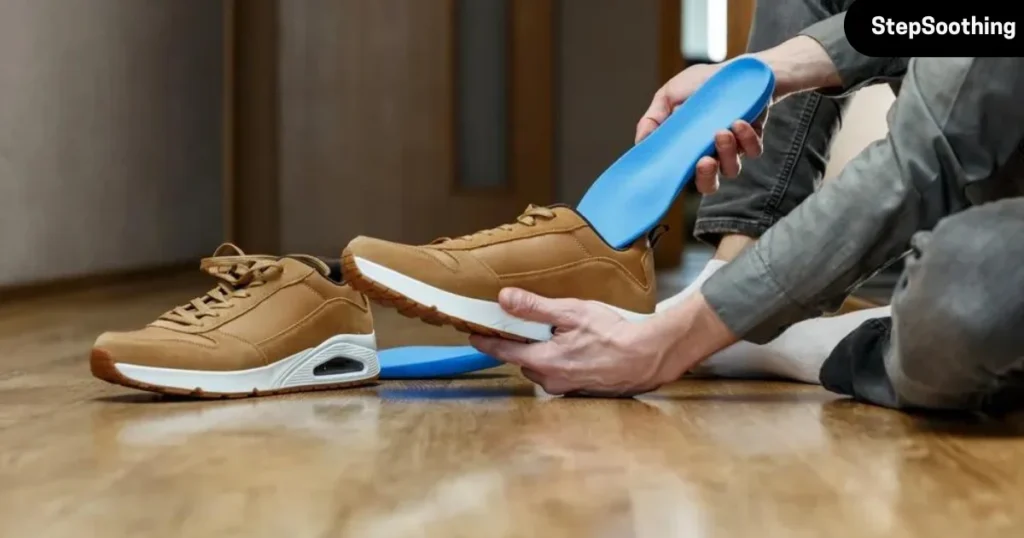Insoles, commonly known as shoe inserts or footbeds, are essential for supporting and enhancing foot comfort. Whether you’re an athlete aiming for performance enhancement in running shoes or someone grappling with foot pain, selecting the appropriate types of insoles can profoundly impact your daily life.

Types of Insoles
A. Comfort Insoles
Comfort insoles are designed to provide cushioning and alleviate pressure points on the feet, making them ideal for casual shoes. They come in various materials such as gel, memory foam, cushioned fabrics, and even wool insoles.
1.Gel Insoles:
Gel insoles are popular for their ability to distribute weight evenly and absorb shock, making them ideal for individuals who spend long hours on their feet.
2.Memory Foam Insoles:
These insoles conform to the shape of the foot, providing personalized support and cushioning. They’re particularly beneficial for individuals with sensitive or high-arched feet.
3.Cushioned Insoles:
Made from soft materials like foam or fabric, cushioned insoles offer gentle support and padding, making them suitable for everyday use and casual footwear.
B. Supportive Insoles
Supportive insoles are specifically designed to address common foot issues such as flat feet, high arches, or overpronation.
1.Arch Support Insoles:
These insoles feature a raised arch to provide extra support and stability for individuals with flat feet or fallen arches, making them a great addition to any type of shoe, including those designed for insoles and orthotics.
2.Orthotic Insoles:
Orthotic insoles are medically designed to correct foot alignment and provide relief from conditions like plantar fasciitis, bunions, and heel spurs. Consider these especially for dress shoes where proper support is crucial.
3.Heel Cups:
Heel cups are inserts that cushion and support the heel, reducing pain associated with conditions such as heel spurs and Achilles tendonitis.
C. Specialty Insoles
Specialty insoles offer unique features and functionalities to address specific needs or preferences.
1.Heat-Moldable Insoles:
These insoles can be customized to the shape of the foot by heating them and molding them accordingly, providing tailored support and comfort.
2.Magnetic Insoles:
Magnetic insoles are believed to promote circulation and relieve pain through the use of magnets embedded within the insole.
3.Massaging Insoles:
Massaging insoles incorporate textured surfaces or built-in rollers to stimulate acupressure points on the sole of the foot, offering therapeutic benefits and relaxation.

Factors to Consider When Choosing Insoles
When selecting the right pair of insoles, several factors should be taken into account:
A. Foot Type and Shape:
Consider your foot arch type (flat, neutral, high) and any specific foot conditions you may have.
B. Foot Conditions or Issues:
If you have foot problems such as plantar fasciitis or pronation issues, opt for insoles designed to address these conditions.
C. Activity Level and Footwear Type:
The type of activities you engage in and the type of shoe you wear will influence the type of insoles that best suit your needs, whether it be short insoles for casual shoes or full-length insoles for running shoes.
D. Material and Durability:
Choose insoles made from high-quality, durable materials that provide long-lasting comfort and support, underlining the importance of insole materials in the selection process.

Benefits of Using Insoles
Insoles offer a wide range of benefits for your feet and overall well-being: improving posture, reducing foot pain, and enhancing the fit of your shoes whether they are running shoes, dress shoes, or casual shoes.
A. Improved Comfort and Support:
Insoles provide cushioning and support, reducing fatigue and discomfort during prolonged periods of standing or walking.
B. Alleviation of Foot Pain and Discomfort:
By correcting foot alignment and reducing pressure points, insoles can help alleviate pain associated with various foot conditions.
C. Prevention of Foot-Related Injuries:
Properly fitted insoles can help prevent injuries such as plantar fasciitis, shin splints, and stress fractures by providing adequate support and shock absorption.
D. Enhanced Performance During Physical Activities:
Insoles designed for sports or athletic activities can improve stability, reduce fatigue, and enhance overall performance.

How to Properly Use and Maintain Insoles
To ensure maximum comfort and effectiveness, follow these tips for using and caring for your insoles: consider using different insole types for running shoes versus casual or dress shoes to match the specific support and cushioning needs.
A. Proper Fitting and Trimming:
Trim insoles to fit your shoes properly and ensure they provide adequate support without crowding the toe area.
B. Regular Cleaning and Airing Out:
Keep your insoles clean and dry to prevent odor and bacteria buildup. Remove them periodically to air them out and maintain freshness.
C. Knowing When to Replace Insoles:
Replace your insoles regularly, especially if they show signs of wear and tear or no longer provide sufficient support. Consider buying full-length insole replacements for optimal comfort and to ensure you receive the support for the foot that’s essential.
D. Tips for Maximizing Lifespan:
Avoid exposing insoles to extreme heat or moisture, and store them in a cool, dry place when not in use to prolong their lifespan.
Conclusion
Insoles are an essential accessory for maintaining foot health and comfort. Understanding the available insole types and choosing the right pair can enhance comfort, support, and overall well-being in daily activities. Invest in quality insoles today and take the first step towards happier, healthier feet.
Frequently Asked Questions
Q1.Are there different types of insoles?
Certainly! Multiple insole types cater to various foot issues, offering different support levels and comfort options. Some common types include orthotic insoles, gel insoles, memory foam insoles, and athletic insoles.
Q2.What is the difference between inserts and insoles?
Insoles and inserts are similar but distinct. Insoles offer padding and support inside shoes, while inserts are removable for extra comfort.
Q3.Which insoles are most comfortable?
The most comfortable insoles often depend on individual preferences and specific foot needs. Yet, memory foam insoles stand out for their soft cushioning and capacity to mold to foot contours, delivering customized comfort.
Q4.What is the purpose of insoles?
Insoles serve several purposes, including providing support, cushioning, and stability to the feet. They can help alleviate foot pain, improve foot alignment, absorb shock during activities, and enhance overall comfort while wearing shoes.
Q5.What are the three types of orthotics?
The three main types of orthotics are functional orthotics, accommodative orthotics, and rigid orthotics. Functional orthotics are designed to control abnormal motion and correct foot mechanics. Accommodative orthotics provide cushioning and support for specific foot conditions. Rigid orthotics are stiff devices used to control motion in the foot and ankle joints.
For more information on insoles, check out Introduction to Insoles, Benefits of Using Insoles & 5 Debunking Myths About Insoles and Orthotics. If you’re interested in a How to Choose the Right Insoles, explore our guide here.



